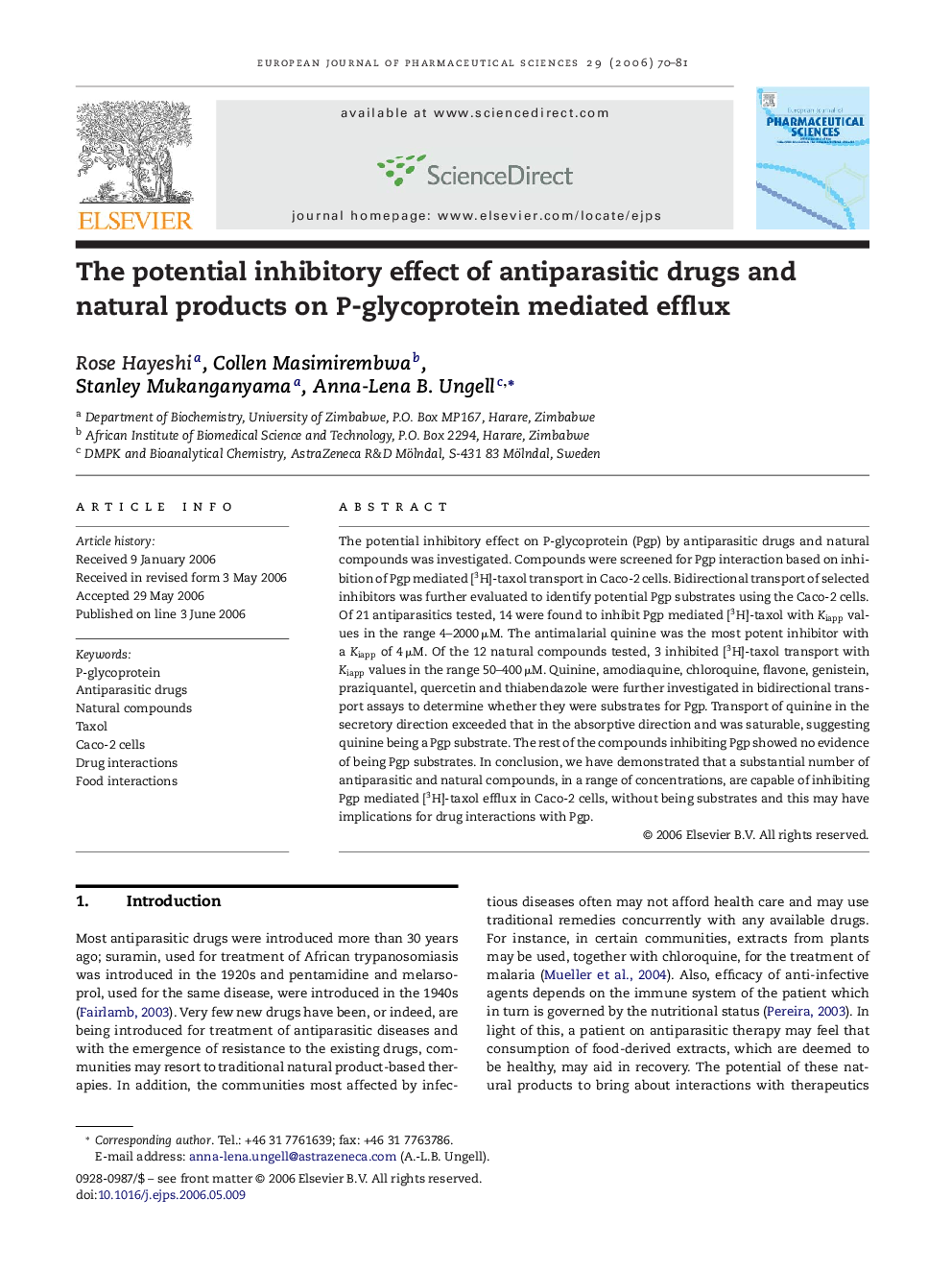| Article ID | Journal | Published Year | Pages | File Type |
|---|---|---|---|---|
| 2482695 | European Journal of Pharmaceutical Sciences | 2006 | 12 Pages |
The potential inhibitory effect on P-glycoprotein (Pgp) by antiparasitic drugs and natural compounds was investigated. Compounds were screened for Pgp interaction based on inhibition of Pgp mediated [3H]-taxol transport in Caco-2 cells. Bidirectional transport of selected inhibitors was further evaluated to identify potential Pgp substrates using the Caco-2 cells. Of 21 antiparasitics tested, 14 were found to inhibit Pgp mediated [3H]-taxol with Kiapp values in the range 4–2000 μM. The antimalarial quinine was the most potent inhibitor with a Kiapp of 4 μM. Of the 12 natural compounds tested, 3 inhibited [3H]-taxol transport with Kiapp values in the range 50–400 μM. Quinine, amodiaquine, chloroquine, flavone, genistein, praziquantel, quercetin and thiabendazole were further investigated in bidirectional transport assays to determine whether they were substrates for Pgp. Transport of quinine in the secretory direction exceeded that in the absorptive direction and was saturable, suggesting quinine being a Pgp substrate. The rest of the compounds inhibiting Pgp showed no evidence of being Pgp substrates. In conclusion, we have demonstrated that a substantial number of antiparasitic and natural compounds, in a range of concentrations, are capable of inhibiting Pgp mediated [3H]-taxol efflux in Caco-2 cells, without being substrates and this may have implications for drug interactions with Pgp.
